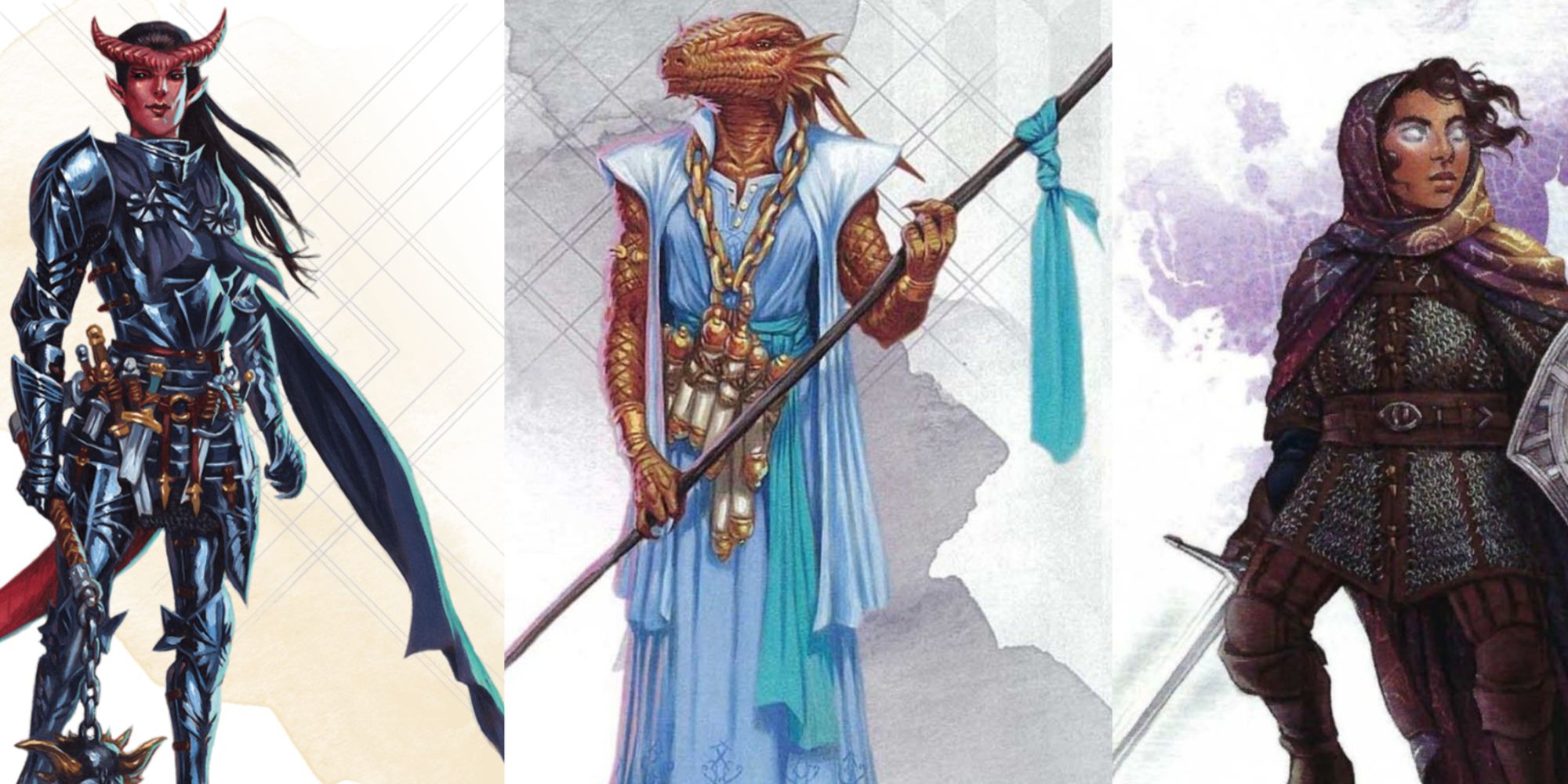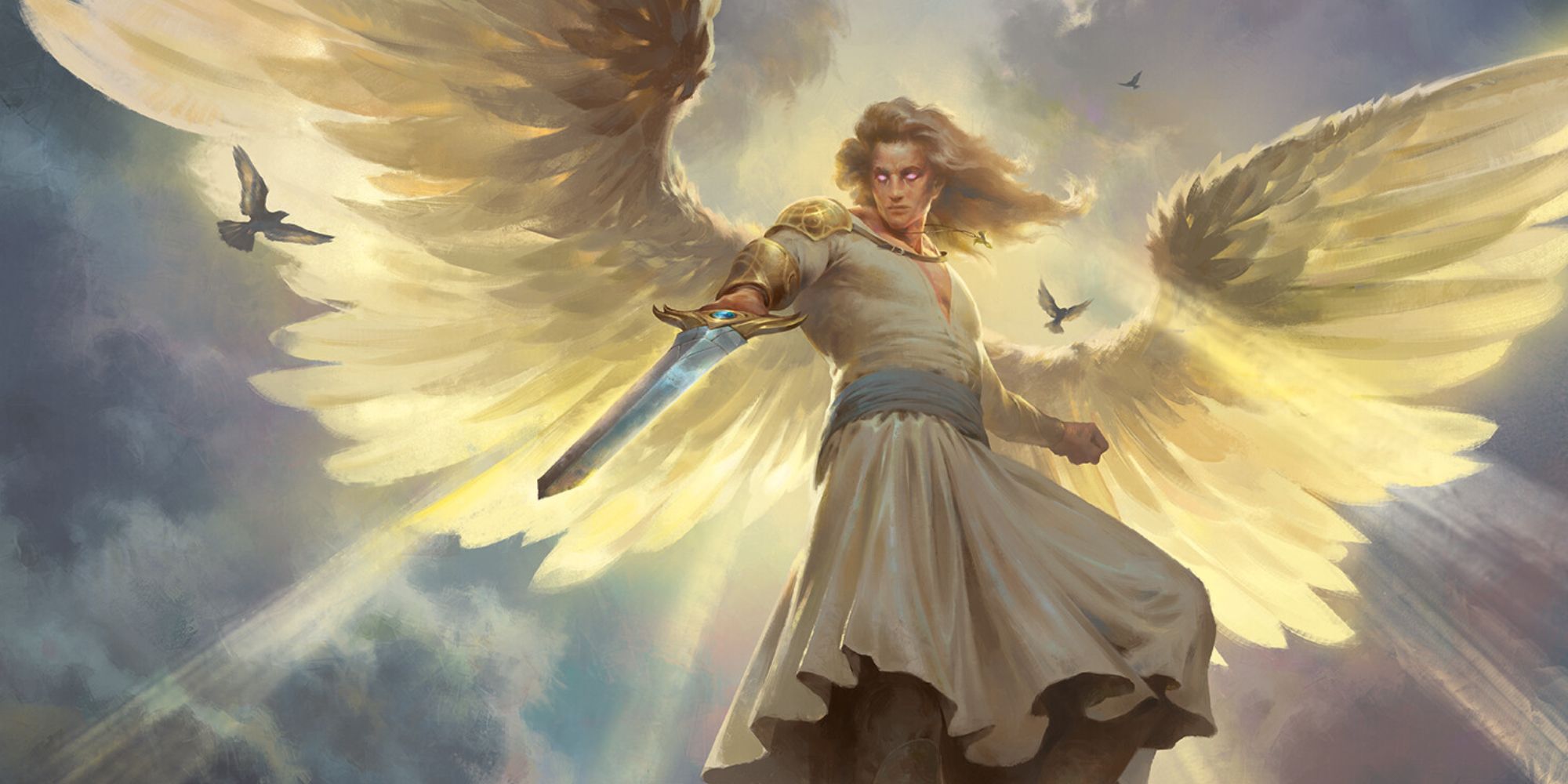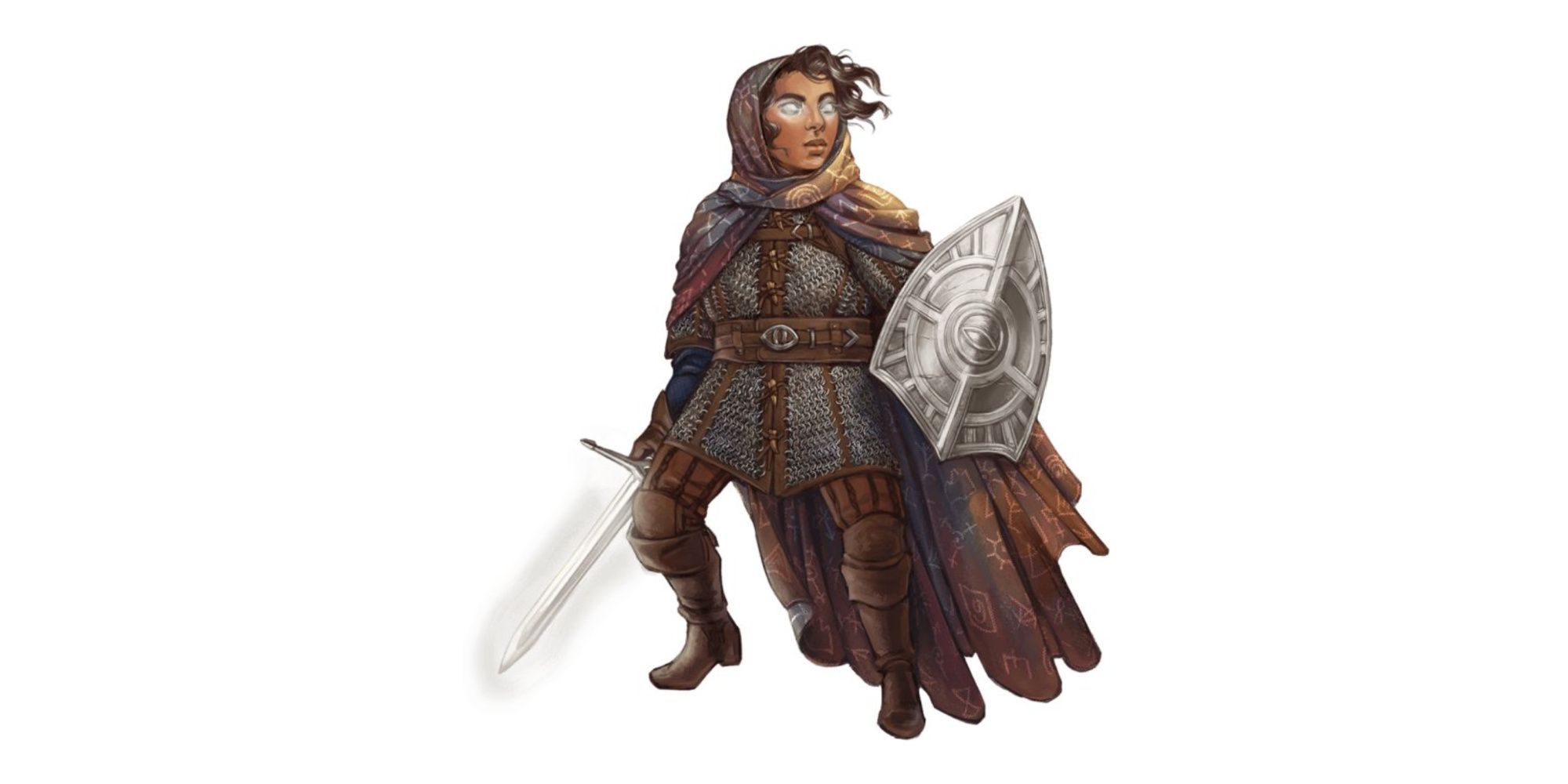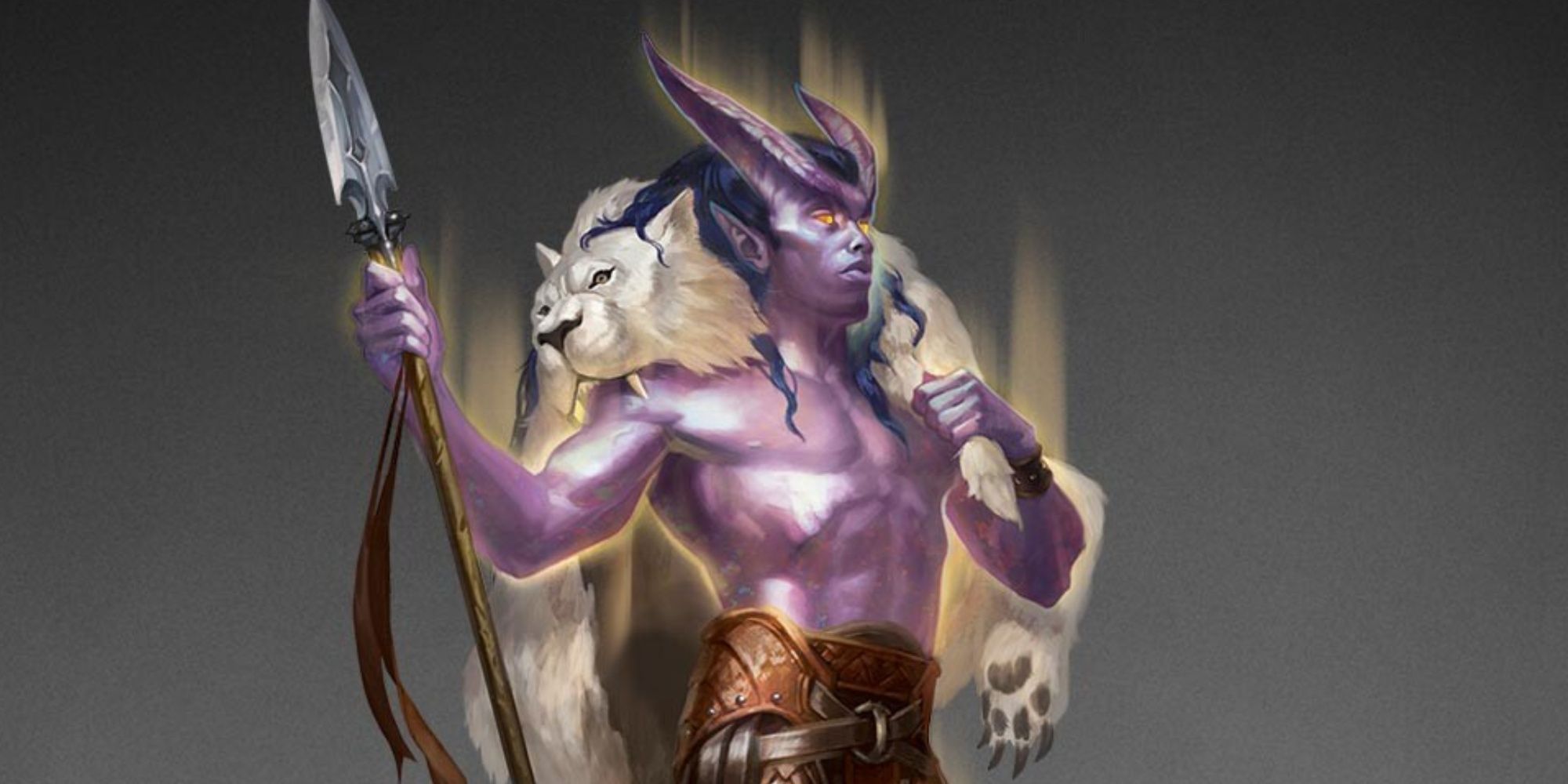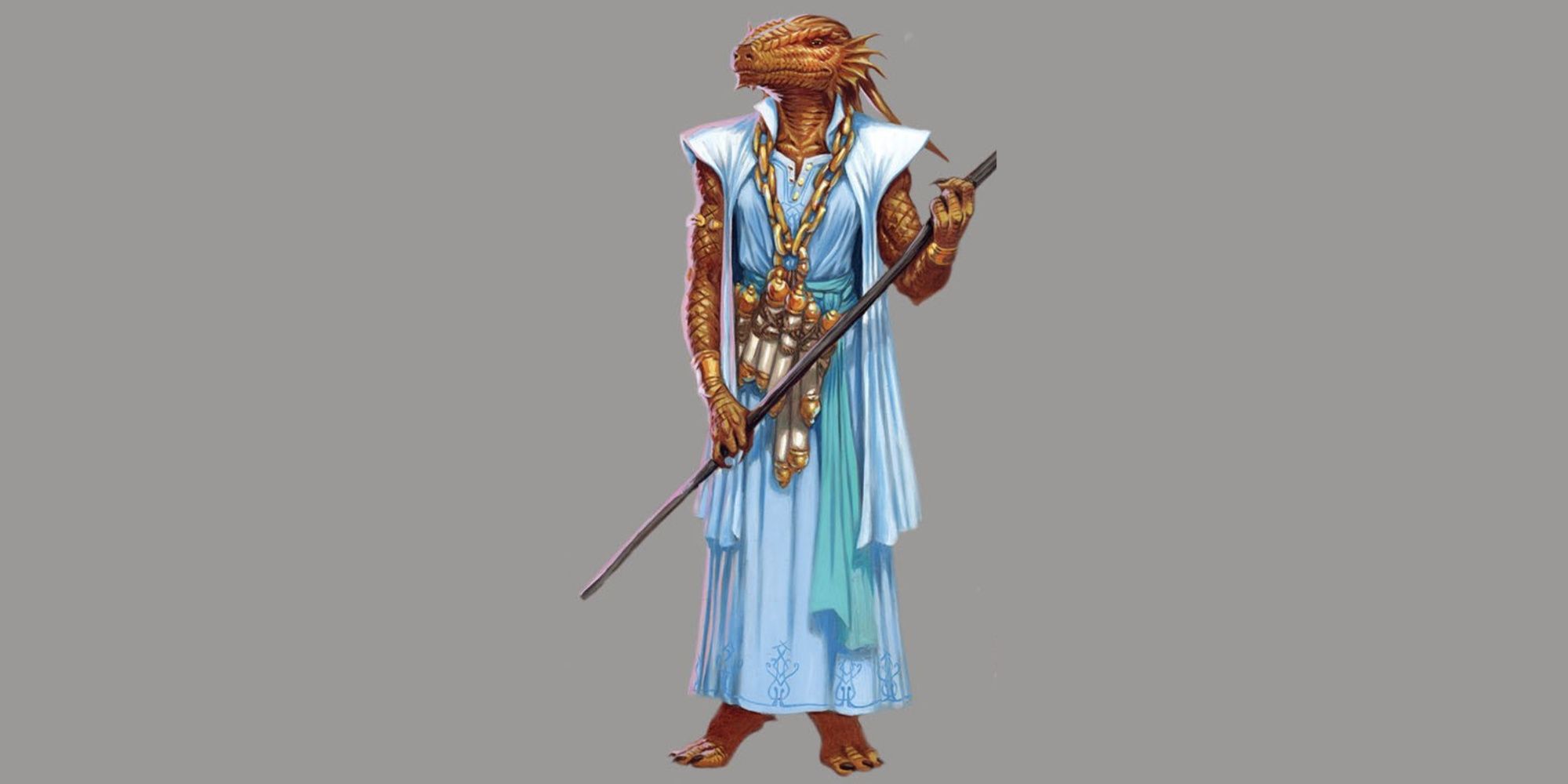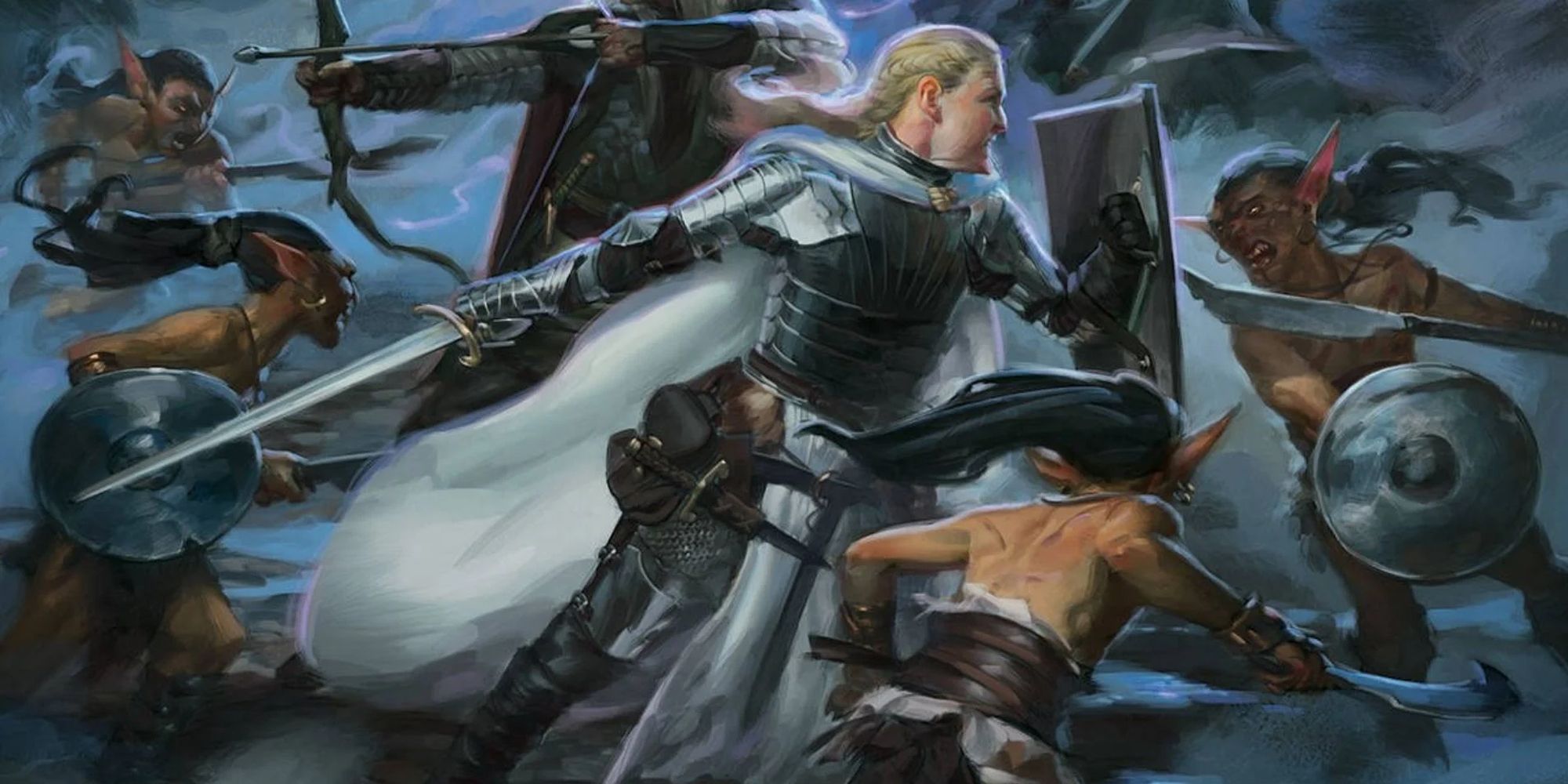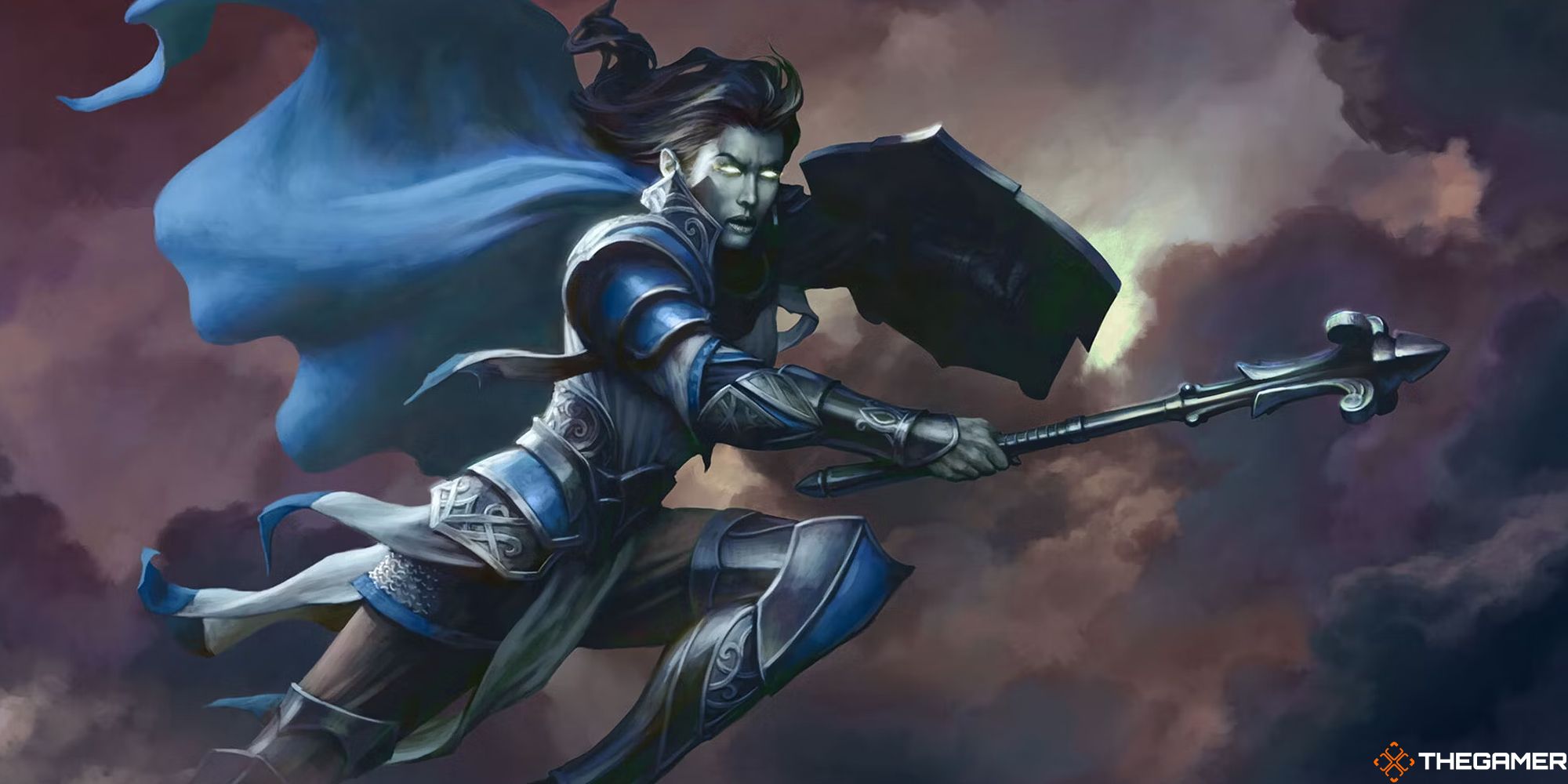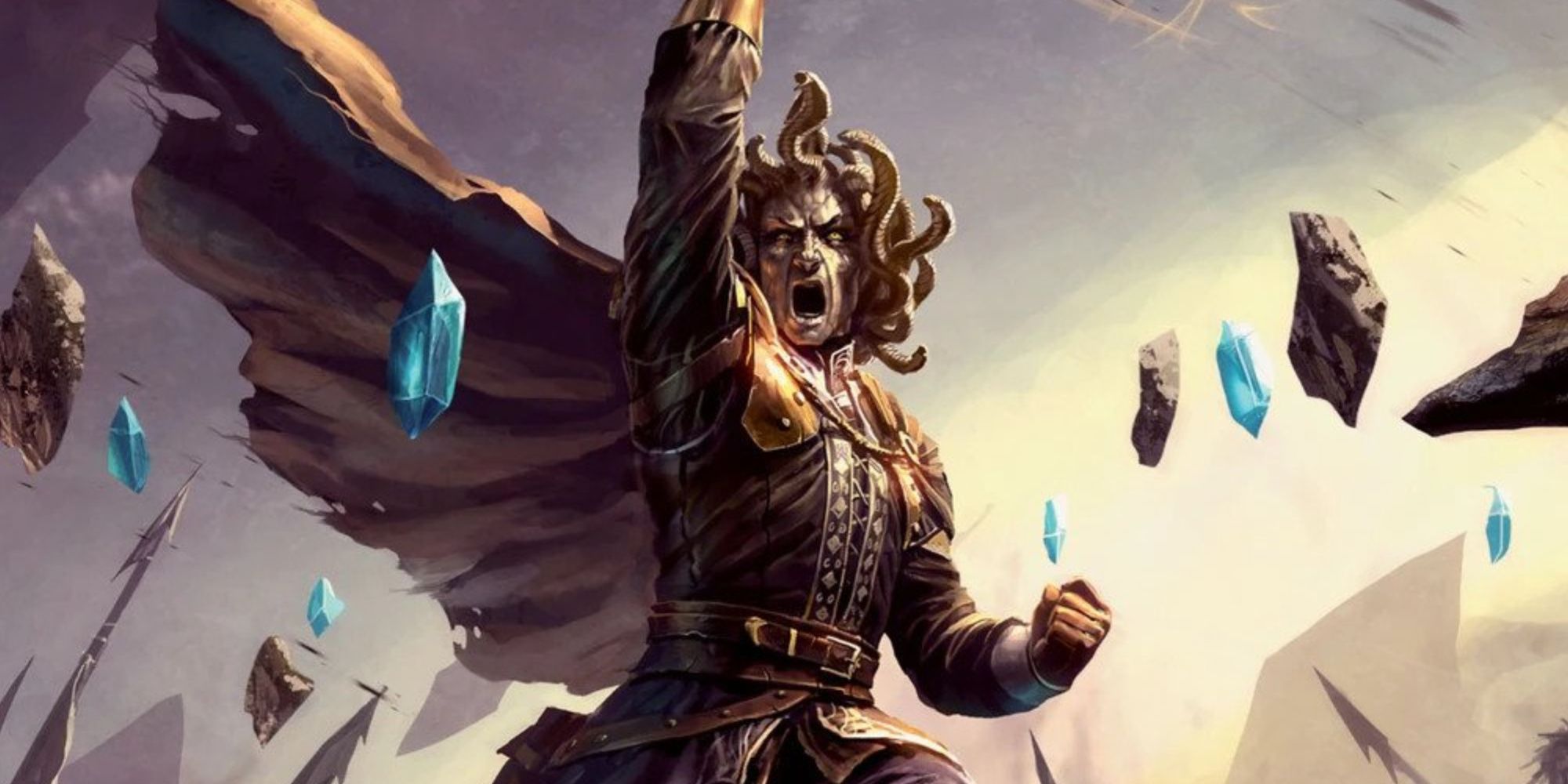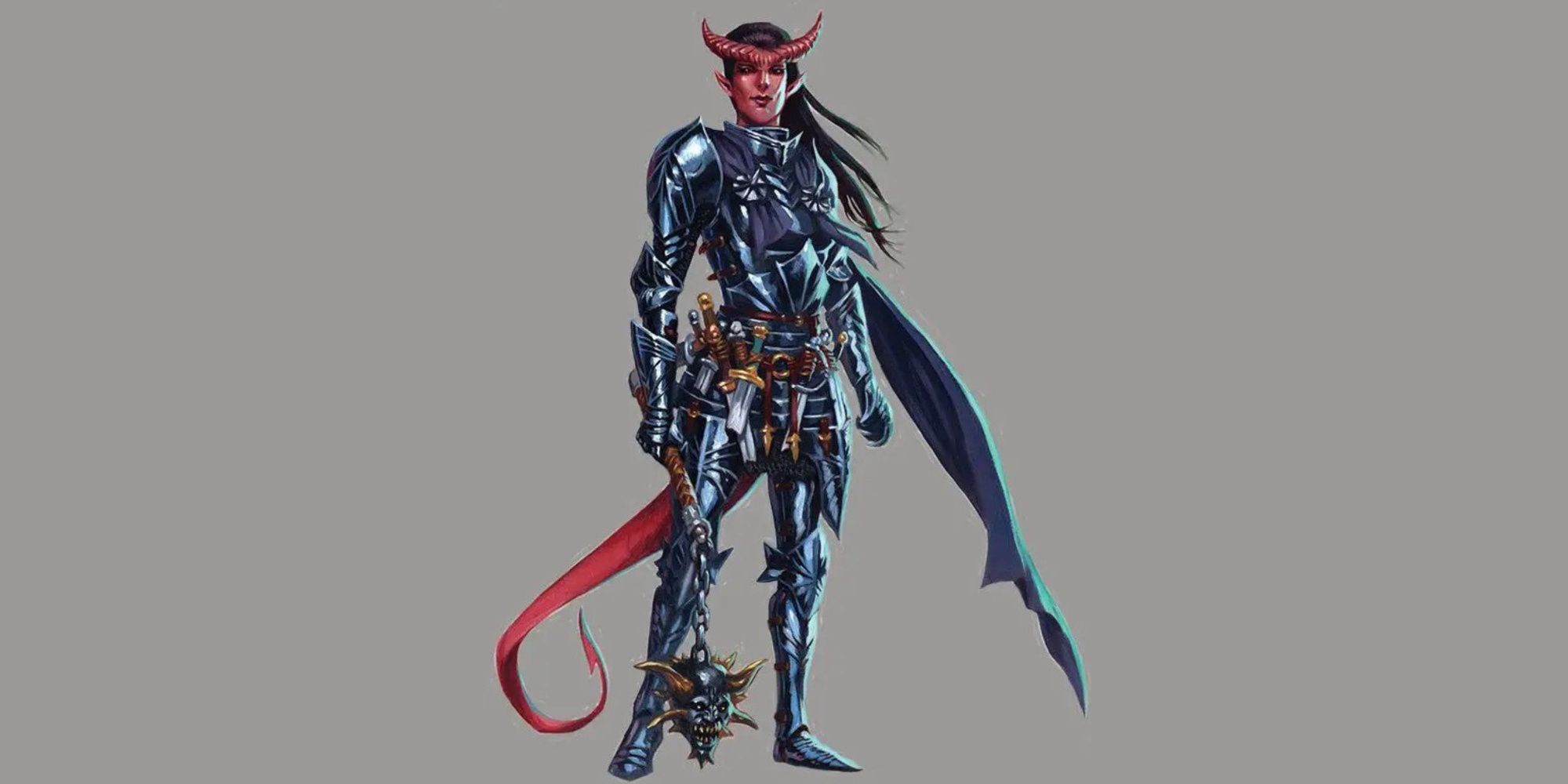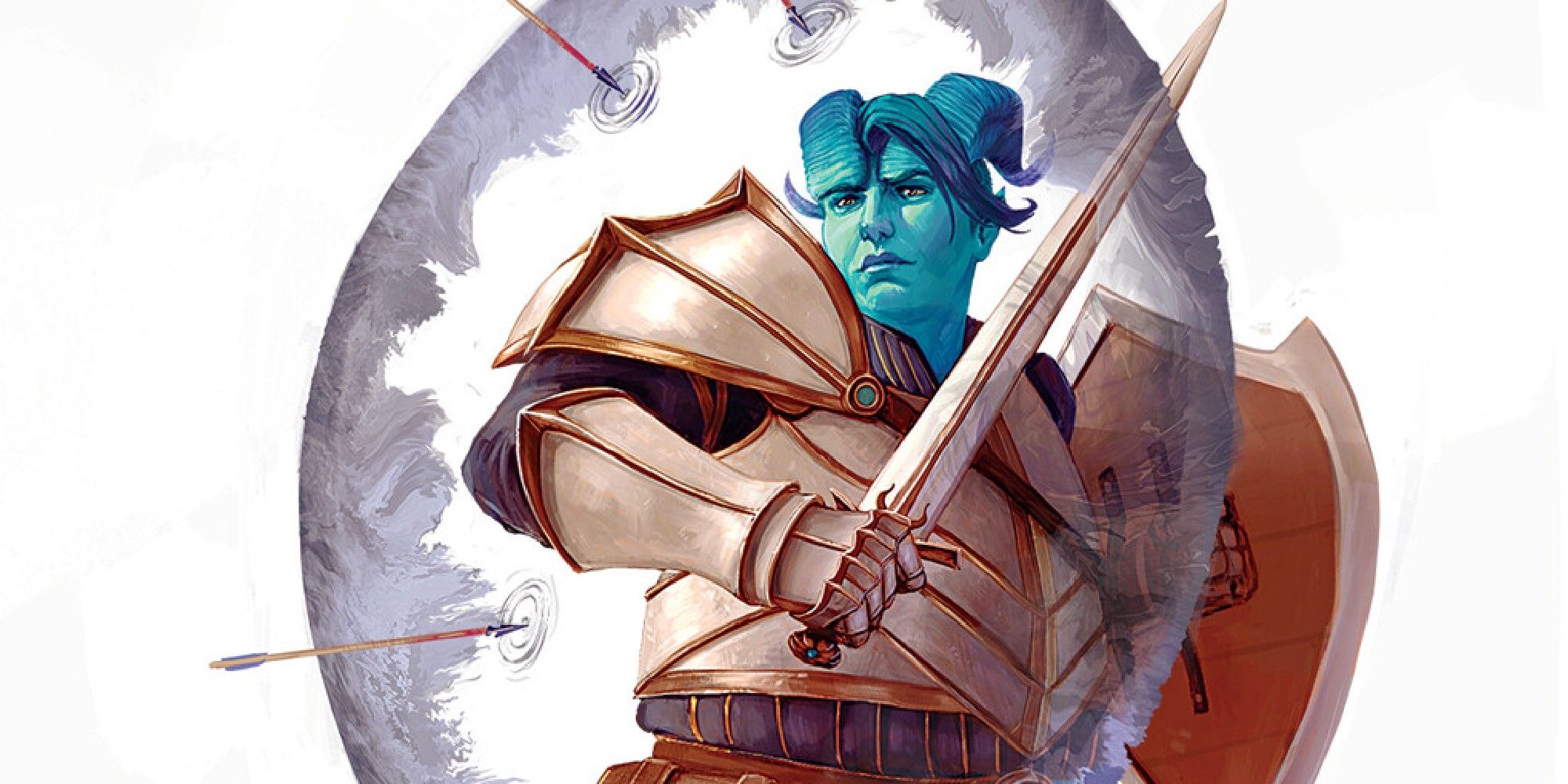Quick Links
Paladins in Dungeons & Dragons have always been a strong class both for their durability and utility in a party. It's a great combination class, giving players options for damage, healing, and defense. There are several useful choices for Oaths, the Paladin archetypes, that tie in nicely with your character and the type of Paladin you want to be.
There are a lot of different Paladin's Oaths to choose from, so consider what role you want to play in your party. They each have different utilities and roles to play that can complement your party and your backstory, but Dungeons & Dragons isn't about min-maxing, so just have fun with it.
Updated July 3, 2023, by Tallis Spalding: Paladins are a classic and notorious class to take on in Dungeons & Dragons, but it's important to have a reminder every so often that you don't have to stick with the traditional moves of being lawful good, or even following a deity of some kind. Even still, we all want to mesh well with our parties and be useful in combat and outside of combat and, wonderfully enough, Paladins are exactly that. Even their weakest subclass is still great comparatively, especially if you can play it well. Nonetheless, if you're looking to answer what the best Paladin Oath is that plays well in combat and offers the most utility, this is the place for you.
Oath Of The Crown
|
Oath of the Crown |
|
|---|---|
|
Source |
Sword Coast Adventurer's Guide |
|
Ideal Fighting Styles |
Blind Fighting, Interception |
|
Party Role |
Defense, Healing |
The Oath of the Crown is for Paladins who believe in the ideals of civilization above all else. This Oath believes that being just and moral in society matters most, and its practitioners work to safeguard their civilizations against interlopers and barbarous tribes.
This Oath feels inferior because tanking Paladins are often expected to be able to heal in a pinch, as well as keep opponents busy and tied up.
The Oath of the Crown can do both things, but in largely ineffective ways compared to other Oaths.
If you want that type of character development, the Crown is a great Oath to consider, but it comes at the cost of being mechanically inferior to virtually all other choices. If you do not mind being comparatively ineffective, there is nothing wrong with this choice. But, it is a decent subclass for the roleplaying potential alone.
Oath Of The Watchers
|
Oath of the Watchers |
|
|---|---|
|
Source |
Tasha's Cauldron of Everything |
|
Main Benefit |
Extra bonuses when fighting extraplanar creatures. |
|
Ideal Fighting Styles |
Blessed Warrior, Defense |
|
Party Roles |
Damage or Defense |
This subclass is great at what it does, mainly to seek, fight, and destroy various creatures from different planes of existence. This is effective in modules that feature extraplanar monsters as the antagonists, like Descent Into Avernus.
This subclass focuses on vigilance and loyalty. While they specialize in extraplanar situations, they can still be useful as spies or for spotting celestials, fey, fiends, and the like, dealing extra damage to those otherworld enemies.
These monsters appear in certain cases in other adventures, but there's also the chance you won't fight them at all. This specialization is handy if you're prepared to use it but is too situational otherwise to be more highly recommended. As such, talk with your Dungeon Master to figure out what the setting of your campaign will be and if this class would work.
Oath Of Glory
|
Oath of Glory |
|
|---|---|
|
Source |
Tasha's Cauldron of Everything |
|
Main Benefit |
Focuses on Athletics and has some bonuses to Charisma checks at later levels. |
|
Ideal Fighting Styles |
Defense, Blessed Warrior |
|
Party Role |
Defense, Healing |
The aim here seems to create a Paladin with more of an ancient Greek aesthetic in the spirit of old heroes like Achilles, which works on a certain level. However, only more experienced players can take this subclass on and play it as an effective defender or healer.
This subclass is all about the embodiment of heroism. Honing your body and mind, being an exemplary hero who enthusiastically takes every challenge and inspires those around you; it's great for roleplaying a Paladin who will become a living legend.
With benefits to attacks, a little crowd control, and group support, it's a good choice as a subclass. If the party needs a character that can act as a support class while also being the group's public face, the Oath of Glory could fill that void perfectly. If you wanted, you could also combine this class with a Bard, which complements it exceedingly well and serves as a great combination.
Oath Of Redemption
|
Oat of Redemption |
|
|---|---|
|
Source |
Xanathar's Guide to Everything |
|
Main Benefit |
Focus on preventing damage and de-escalating conflict. |
|
Ideal Fighting Styles |
Defense, Interception |
|
Party Role |
Defense, Healing |
Redemption Paladins are pure and more traditional in their role-play design, keeping peace, innocence, patience, and wisdom in high regard. It's more common to see them in a defensive position, but they can also be tailored to be effective healers.
If an ally takes damage within their aura, the Redemption Paladin redirects this damage to themselves, which is selfless but also dangerous if used carelessly.
At high levels, this is negated somewhat through gaining resistance to damage which can help keep the playstyle ongoing even against more powerful opponents. This is an overall decent choice for keeping allies safe. The Oath of Redemption can be one of the most interesting choices for those who want a challenge instead of simply hitting an opponent as hard as possible.
Oath Of Vengeance
|
Oath of Vengeance |
|
|---|---|
|
Source |
Dungeon & Dragons Player's Handbook |
|
Main Benefit |
The ability to focus on one opponent and punish them severely by limiting their movement, gaining an attack of opportunity against them. |
|
Ideal Fighting Styles |
Great Weapon Mastery |
|
Party Role |
Damage |
Taking the Oath of Vengeance puts the Paladin on a path to punish all who would commit a grievous sin. If someone has been wronged, be it by small Goblins or an intimidating Dragon, Vengeance Paladins look to set things right through physical confrontation.
While Vengeance Paladins are a blast to play, they are not nearly as focused on keeping their team safe, at least not in the same direct way. You could argue that focusing on a single problematic opponent does keep allies from harm, but this is less true when dealing with foes in larger numbers.
Don't expect any crowd control, but one-on-one combat can be exciting, with ways to impose advantage against your enemy, among other tricks.
Oathbreaker
|
Oathbreaker |
|
|---|---|
|
Source |
Dungeon Master's Guide |
|
Main Benefit |
Bonuses to fighting undead and a wider choice of possible moral alignments. |
|
Ideal Fighting Styles |
Great Weapon Mastery, Blind Fighting |
|
Party Role |
Damage |
The Fallen Paladin archetype is one you might enjoy if you aren't looking to be constrained by other Paladin Oaths. These Paladins aren't as versatile when it comes to their party role, taking on a melee damage role almost exclusively, but the damage they can do is extensive.
A class previously confined to NPCs or homebrews, the Oathbreaker in the Dungeon Master's Guide is fun but concentrated around a specific gimmick.
Still, it's a compelling idea with many interesting role-play options.
They have some AoE skills and can manipulate the undead, handy abilities that Paladins don't normally have. They're so high on the list because their specialty allows for them to eventually gain resistances to some of the most common damage types, control the undead, utilize AoE and crowd control, and eventually come back through atonement if they wish, a fun aspect to roleplay once their mission is complete.
Oath Of The Ancients
|
Oath of the Ancients |
|
|---|---|
|
Source |
Dungeon & Dragons Player's Handbook |
|
Main Benefit |
A close connection to the natural world, with abilities similar to Druids and Rangers. |
|
Ideal Fighting Styles |
Protection, Dueling |
|
Party Role |
Defense, Damage |
Oath of the Ancients is for those who wish to protect all that is good everywhere. Adorned by insignia and decoration that looks more like a Druid than anything else, Ancient Paladins gain abilities befitting their commitment to preserving nature.
Aura of Warding is one of the best abilities that any Paladin Oath has to offer, providing useful resistance to damage from spells.
This can fall within the realm of circumstantially useful, but in a spell-heavy campaign, the Oath of the Ancients is a fantastic choice to keep the party in great shape against threats of magic. This is still a solid choice for an Oath at higher levels, providing even more utility and rapid healing.
Oath Of Conquest
|
Oath of Conquest |
|
|---|---|
|
Source |
Xanathar's Guide to Everything |
|
Main Benefit |
Reduces the speed of targets and has strong crowd control abilities. |
|
Ideal Fighting Styles |
Defense, Interception |
|
Party Role |
Defense |
Conquest Paladins are experts at one-on-one combat and keeping their foes in one place, making them excellent for crowd control, however they also open themselves up to be targeted if they are the only party member within range. In terms of role-playing, Conquest Paladins can be another version of the fallen Paladin concept with the capability of becoming evil in everything but name. They want to crush their enemies in whatever way they can.
Aura of Conquest makes this a predominant play style, reducing the speed of affected opponents to zero through Fear.
This may include consorting with the powers of the Nine Hells, with many supporting the Archdevil Bel, Warlord of Avernus. This Oath is anything but boring but requires players to have a good understanding of who their character is and what motivates them for this choice of Oath to make sense.
Oath Of Devotion
|
Oath of Devotion |
|
|---|---|
|
Source |
D&D Player's Handbook |
|
Main Benefit |
The classic build with a mix of defensive, damage, and healing abilities. |
|
Ideal Fighting Styles |
Great Weapon Mastery, Defense |
|
Party Role |
Damage, Healing, Defense |
The number one spot goes to Devotion Paladins. Despite being the vanilla choice for the class, they embody every stereotype of the strong-willed individual who craves only the most ideal version of justice, virtue, and order. These work well for long campaigns and offer players who are new and old to the game plenty to work with, plus you can always become an Oathbreaker if you really wanted.
Those who take the Oath of Devotion can expect a strong class, with strong capabilities in Light damage, an improved turn undead compared to a Cleric, and the prevention of being charmed through their aura. Any party will always have a spot for a capable Devotion Paladin, and it is hard to go wrong with such a pick.

